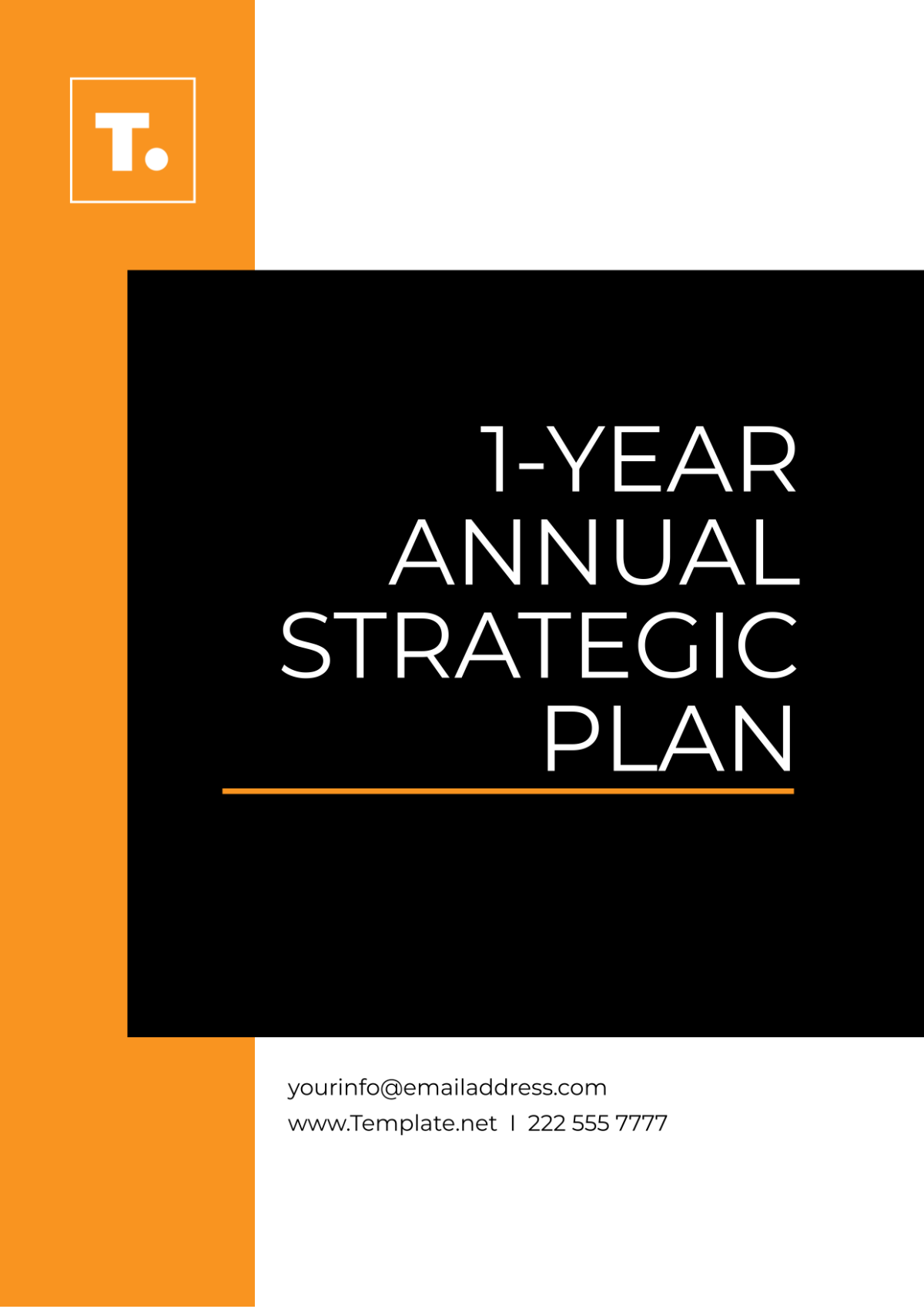Free 1 Year Annual Strategic Plan

Prepared by | Company | Department | Date |
|---|---|---|---|
[Your Name] | [Your Company Name] | [Your Department] | [Date] |
I. Executive Summary
Following an intensive sales planning session, the executive team of [Your Company Name] convened to outline the overarching strategic goals for the upcoming year. The session aimed to identify key areas for growth, and potential challenges, and to develop a comprehensive strategic plan to guide decision-making over the next twelve months.
II. Vision and Mission
Vision: Our ambition is to be acknowledged globally as the leading management consulting firm, dedicated to driving transformative change and delivering exceptional value to our clients across various industries.
Mission: Our mission is to empower organizations around the globe, enabling them to achieve sustained success by adopting innovative strategies, gaining unparalleled insights, and maintaining an unwavering commitment to excellence.
III. Goals and Objectives
Goal 1: Market Expansion
Objective 1: Increase market share by 15% in the Asia-Pacific region through targeted marketing campaigns and strategic partnerships.
Objective 1: Penetrate new markets in emerging industries such as renewable energy and digital transformation, capturing at least three major clients in each sector.
Goal 2: Client Satisfaction
Objective 2: Enhance client satisfaction scores by 20% through the implementation of personalized client service models and regular feedback mechanisms.
Objective 2: Develop and implement a comprehensive client feedback mechanism, including quarterly surveys and annual client appreciation events.
Goal 3: Talent Development
Objective 3: Increase employee retention rate by 25% by offering competitive compensation packages, and career advancement opportunities, and fostering a culture of continuous learning.
Objective 3: Launch leadership development programs targeting high-potential employees, providing them with mentorship opportunities and executive coaching.
IV. Strategies and Initiatives
Strategy 1: Geographic Expansion
Initiative 1: Establish new offices in strategic locations such as Shanghai, Sao Paulo, and Nairobi to capitalize on emerging market opportunities.
Initiative 1: Hire local talent with deep industry expertise to support expansion efforts and facilitate seamless integration into new markets.
Strategy 2: Service Innovation
Initiative 2: Invest in research and development for new service offerings tailored to the evolving needs of clients, such as AI-driven predictive analytics and sustainable business solutions.
Initiative 2: Enhance existing service delivery processes through the adoption of agile methodologies and technology-driven solutions to improve efficiency and client satisfaction.
Strategy 3: Talent Management
Initiative 3: Implement mentorship programs pairing senior consultants with junior staff to facilitate knowledge transfer and skill development.
Initiative 3: Revamp the performance evaluation system to provide timely feedback, recognition, and opportunities for professional growth.
V. Key Performance Indicators (KPIs)
A. Sales KPIs:
Sales KPIs | Target |
|---|---|
Revenue growth | Targeting a 20% increase |
Client acquisition rate | Aim to onboard at least 10 new clients in high-growth sectors. |
B. Client Satisfaction KPIs:
Net Promoter Score (NPS): Targeting an NPS of 75 or higher.
Client retention rate: Aim to retain 90% of existing clients through exceptional service delivery.
C. Employee Development KPIs:
Employee turnover rate: Targeting a decrease in turnover rate to below 10%.
Training hours per employee: Aim to provide an average of 40 hours of training per employee annually.
VI. Risk Management Plan
Risk 1: Economic Downturn
Mitigation: Diversify client portfolio across industries and geographical regions to mitigate the impact of economic fluctuations.
Contingency: Implement cost-saving measures such as hiring freezes and discretionary spending cuts if revenue targets are not met.
Risk 2: Talent Attrition
Mitigation: Improve employee engagement initiatives, including regular feedback sessions, career development plans, and recognition programs.
Contingency: Expedite recruitment processes and leverage external talent networks to quickly fill critical vacancies.
VII. Implementation and Monitoring
Monthly progress review meetings led by the Strategy and Operations department, with representation from key stakeholders across departments.
Quarterly performance evaluations against KPIs to track progress and identify areas for improvement.
Annual strategic plan reassessment and adjustments based on evolving market dynamics, client feedback, and internal performance metrics.
- 100% Customizable, free editor
- Access 1 Million+ Templates, photo’s & graphics
- Download or share as a template
- Click and replace photos, graphics, text, backgrounds
- Resize, crop, AI write & more
- Access advanced editor
Enhance and Discover the 1-Year Annual Strategic Plan Template from Template.net. Crafted with precision, this editable and customizable template empowers you to chart your course to success with ease. Seamlessly editable in our Ai Editor Tool, it's your strategic ally in shaping a roadmap for growth and achievement. Unlock your potential today.





























